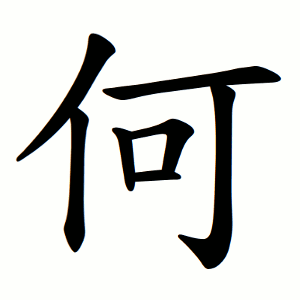何
- how, what, which;
Etymology
A phono-semantic compound:
人 (사람 인) gives the semantic element, suggesting “person.”
可 (옳을 가) supplies the phonetic element.
Originally depicted as a person with an added phonetic, it came to mean “what, which person, how.”
Semantic range:
- what, which (무엇, 어느);
- how, why (어찌, 어떠한 방식으로);
- sometimes used in proper names.
Usage in Korean
何事 (하사) — what matter, what affair
何人 (하인) — who, which person
何必 (하필) — why necessarily, needlessly
如何 (여하) — how, in what way
幾何 (기하) — how many, how much; also “geometry” in mathematics
Words that derived from 何
Additional notes
In classical literature, 何 often functions as an interrogative particle in poetry and philosophy, introducing existential questions: “What is it?” / “Why so?” Its use conveys both inquiry and a sense of wonder.
In Daoist texts, 何 is sometimes used rhetorically to point toward the ineffable: “What (何) can the Dao be likened to?” Here it emphasizes the limits of language in capturing ultimate reality.
In Christian translations, 何 appears frequently in rhetorical or existential questions within the Bible (e.g., “What is man that You are mindful of him?” — 詩篇 8:4). Its role is not technical, but it helps convey the sense of human humility and inquiry before God.
